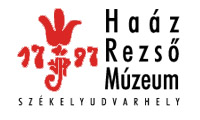Kovács Petronella (szerk.): Isis - Erdélyi magyar restaurátor füzetek 8-9. (Székelyudvarhely, 2009)
Puskás Éva: A Szatmári Római Katolikus Egyhámegye kulturális javaainak megmentése
Poorly preserved laces, knitted fabrics, crochets, macramé or mesh with large missing areas can be consolidated without the completion of the ornament, with stitching them on a thin, loose yet strong, translucent fabric. When an openwork fabric is well preserved with only a small injury, the missing area can be completed with looping and knotting identical to the original technology. In the case of knotted carpets, the missing areas can be replaced with supporting and weaving from among the abovementioned methods, and also with weaving and embroidery that marks the knotting, and weaving and knotting. Brittle carpets with large missing areas are generally only conserved with supporting it on a monochrome base, or the colours can be used in patches, or the outlines of the pattern are marked on the support. Carpets the knots of which have worn off can simply be conserved with weaving, as it has been described above. Besides consolidating with weaving, the places of the knots can be indicated with embroidery at the outlines of the pattern. The weaving of the missing areas of carpets of less worn surfaces and smaller losses of knots can cause a level difference between the support and the object of art. In these cases, local knotting can complete the weaving. From among the ornamental techniques of textiles, the stitching conservation and the completion of coloured fabrics are made with the help of a support. In the case of coloured fabrics, the missing painted areas are replaced only in justified cases after supporting. At large missing areas, only the outlines of the pattern are marked. The completion of embroidery is mostly justified by static respects. The decorative threads should only be replaced because of aesthetic reasons when preserved traces of stitches can be used on a large surface. The missing areas of fabrics decorated with metal threads are generally completed with coloured fibrous materials. Covering with crepoline, a technique that is not applied in itself but often follows stitching conservation can be mentioned beside the above methods. Covering a decorated or an undecorated fabric in this way is made according to structural aspects. A thin, transparent, well preserved silk can also protect the right side of the injured fabric, which is supported or completed with other methods, and it can hinder the further deterioration of the surface. The disadvantage of the method is that the outlines and the colours of the “protected fabric” will become matt and “blurred”. Andrea Várfalvi Textile and leather conservator MA Hungarian National Museum Department for Conservation Training and Research Budapest Phone: +36-1-210-1338 E-mail: varfalviandrea@gmail.com Éva Benedek - Zsuzsa Mara The exhibition „Munkácsy’s paintings in Transylvania’ organised in Csiki Székely Museum from the respect of ort object protection The large-scale fine art exhibition of 47 works of art, several relics and contemporary photos of Mihály Munkácsy one of the greatest representatives of Hungarian painting was organised in Csiki Székely Museum in May, 2007. The cultural program, which was organised in Csíkszereda, Transylvania after several towns in Hungary, attracted no less than 62 000 visitors from all parts of the world. This was the largest program ever organised in the museum, and it meant a great challenge to the museum staff. The task was the setting up of an art object friendly environment on a European standard, which was fit to receive paintings that demanded a strictly regulated environment. The preparation of exhibition rooms was a complex task. The strategy, which was elaborated together with the colleagues, had three major purposes: the renovation of the rooms, their furnishing with a high standard security system and finally, the elaboration and observance of an art object protection strategy. A team of specialists of various fields worked on the exhibition rooms. In this study, the emphasis is laid on the appropriate solutions of creating the environment of art objects and on experiences concerning this aspect. Munkácsy’s paintings demand a special environment, so the rooms had to be furnished with instruments that enabled the setting and the stabilisation of the temperature and the relative moisture content. We also had to eliminate the infra red radiation and minimise the ultraviolet radiation that reached the paintings. At the same time, the factors that influence temperature and moisture content, like heat emission by the instruments that serve this purpose , the visitors, illumination and weather, also had to be taken into account at the setting of the climatic values of the rooms. In the case of Munkácsy’s paintings, temperature was the crucial point since Munkácsy preferred the bituminous technique. With this in mind and with respect to the afforded and the specified temperature range, a value between 18 °C and 20 °C was set in the exhibition with the afforded and unavoidable fluctuation of +2 °C. Specialists calculated the size and number of the instruments necessary for the given air space and 12 instruments were placed in the five rooms: with this a stabile climate was secured in the exhibition rooms. Another significant aspect of the Munkácsy exhibition was the regulation of the moisture content. We expected that the temperature and the moisture content would quickly rise during the peak period because of the large number of visitors. With respect to possibly emerging extreme problems, a desiccating instrument was placed in every room. This was an automatic mobile instrument of a low electric power supply controlled by a digital thermohygrostat, which alternately displayed the temperature and the actual moisture content of the room. The precipitating 191
